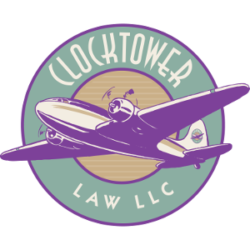Patent law in plain English. But not in that order.

Why File Patents?
Patent laws exist. Just like tax laws exist. Smart companies take advantage of patent laws. Just like smart individuals take advantage of tax laws by itemizing their deductions on their tax returns rather than filing the short form 1040EZ and paying more taxes than they have to.
That said, patent laws do not have to exist in an ethical vacuum.
All modern patent laws derive from the epically awesome 1474 Venetian Patent Statute, which states, in part:
WE HAVE among us men of great genius, apt to invent and discover ingenious devices; and in view of the grandeur and virtue of our City, more such men come to us from divers parts. Now if provision were made for the works and devices discovered by such persons, so that others who may see them could not build them and take the inventor’s honor away, more men would then apply their genius, would discover, and would build devices of great utility and benefit to our Commonwealth.
The goals of the original patent statute of Venice were noble and worthy: to entice men (and women) of great genius to come to Venice to enrich the lives of its citizens. Fast forward to 1789, when the US Constitution was written and the so-called “patent clause” (Article 1, Section 8, Clause 8) was enacted without controversy and WITHOUT DISCUSSION:
The Congress shall have Power To … promote the Progress of Science and useful Arts, by securing for limited Times to Authors and Inventors the exclusive Right to their respective Writings and Discoveries.
Patent laws (such as these) based on the right ideas and ideals should, rightly, be noncontroversial. Where we get into trouble, as a society, is when the letter of the law departs from the spirit of the law. Such is the case with modern day patent trolls, who would have done nothing to enrich Venice and should have no place in 21st century US patent law.
So it is easy, I argue, for a patent lawyer to be ethical and idealistic: simply represent those clients who follow the spirit of the law. Some doubt that it is possible to identify such clients. To those doubters I say: (1) ask yourself why you went to law school in the first place and (2) ask your mother for her opinion.
With that historical preamble, I acknowledge that there are many valid reasons for getting a patent, including:
- employee motivation/retention
- defense (and quid-pro-quo licensing)
- impressing clients (with shiny “patent pending” technology)
- impressing inventors (actual and potential)
- impressing your board of directors
- scaring off competitors
Habit #2 of the “The 7 Habits of Highly Effective People” (book by Stephen R. Covey) is “begin with the end in mind.” So before you dive into the patent waters, know what your business goals are.
Where To File Patents
A US patent gives the patent owner the right to exclude others from making, using, and selling the patented thing in the US. Other countries confer similar rights on patent owners. In general, you should patent your product where your customers are.
If you are a US-only entity, then consider a US-only patent strategy. An advantage of pursuing a US-only patent strategy is that you can file a nonpublication request (with the initial US patent filing) and avoid having the patent application published 18 months after filing, which is the default. This way, if the patent application does not mature into an issued patent, then you can abandon the patent application and keep the patent application a trade secret. In other words, the secret sauce will only be revealed if/when a patent issues.
For many US startups, filing patents outside of the US may not be worth it. It generally costs four times as much to get patent protection in all of Europe as it does in the US. That said, there are two times when filing non-US (i.e. “foreign”) patent applications makes sense:
- First, if you have significant non-US business. What’s significant? I think 20%.
- Second, if you have a likely acquirer (or investor) located outside of the US.
As an aside, I don’t like the term “foreign” as it depends on one’s perspective.
Who Is The Inventor? Who Files The Patent?
First, who is the inventor? Steve Jobs may not have engineered the innards of Apple’s original iPod, but the product whose patent (correctly) bears his name was, by all accounts, his idea. As do many other of Steve Job’s inventions. Because that’s who the inventor is: the one who CAME UP WITH (i.e. conceived) the idea. NOT the one who built it (i.e. reduced the idea to practice). That said, products have many features, and if a particular feature was your idea, then you are the inventor of the embodiment of the product that includes that feature. Inventorship, therefore, is determined on a claim-by-claim basis and must be carefully reviewed for accuracy before a patent issues.
Second, who is listed first? The first-named inventor is the one whose name goes on the patent. The others get to be in the “et al.” category, which is somewhat less rewarding. So you should list the names of the inventors carefully on the patent application. (Perhaps this should be the first issue.)
Finally, although inventors are individuals, most law firms represent companies, and most companies require their employee/inventors to assign their patent rights to the company as a consideration of employment.
What Can Be Patented? What Should Be Patented?
A related question is “whether” to file a patent application. So I’ll address that question first. If you have a product that cannot be reverse engineered by virtue of its having been launched (where “launch” is defined as sold, offered for sale, publicly used, or published), then you should consider keeping your product a trade secret rather than pursuing patents. Trade secrets last as long as they remain secret. Patents last only 20 years from when you file them.
But if you do have a product/service that can be reverse engineered, then patents may be a good fit.
The legal requirements for getting a patent focus on legalese and are numerous and confusing. (In short, your product must be new, useful, nonobvious, and sufficiently disclosed.)
The plain English requirements for getting a patent, on the other hand, are two and product-based:
- If you have a “product” (which I’ll define more in a moment), that you believe to be better/faster/stronger than the competition, using features/benefits that YOU define (think marketing/sales sell sheet), then you have satisfied the first requirement (which is, essentially, the novelty requirement of patent law). Most startups can easily do this. It’s why you quit your day job and joined a startup.
- If your product has one feature/benefit that is unique to you (think “secret sauce”), then you have satisfied the second requirement (which is, essentially, the nonobviousness requirement in patent law). Not all startups can do this. Just because you have a winning product in the marketplace doesn’t mean you can win at the Patent Office. This issue occupies 95% of the time of patent practitioners (i.e. patent attorneys and patent agents). Recent US Supreme Court case law has made it extremely easy for the USPTO to reject patent applications as being “obvious” (in law) even though they are not “obvious” (in fact).
To keep things simple, I define “product” to include both “product” and “service.” And your “product” is anything you do sell, anything you could sell, anything you do license, anything you could license, anything you use internally, and any improvement to any product (think point release for software); whether or not you charge money for the product. Google Search is free for users, it is a product. The Twitter API is a product. Version 2.0 of your software is a product. So is version 2.1 And so on.
So if your startup is struggling to craft its patent strategy, know this: your product strategy IS your patent strategy. Before (and more on “when” below) you are getting ready to launch any product, you should consider filing a patent. Put a box around it, think how you’d position it in the marketplace, then you’re ready to patent it. Believe it or not, marketing/sales materials are as helpful (if not more helpful) than technical documents for writing patents. So the two most important people on your patent team are you CTO and CMO, not necessarily in that order.
When To File Patents
The ideal time to file a patent application is the day you can describe how to make and use your invention, and the ideal time to start the patent application process is two months before the day you can describe how to make and use your invention. A practical way to think about timing is to start the patent process two months before your scheduled product launch.
In 2013, under the guise of “patent reform,” US patent law changed from a first-to-invent system (i.e. the best patent system in the world) to a first-inventor-to-file system (i.e. like the European patent system). Under the old system, US patent applicants had a one year “grace period” between launch and when they could file for US patent applications. Under the new system, this grace period has been gutted, and, due to sloppy drafting, ambiguities in the new law have caused pragmatic patent practitioners to conclude that the US is the functional equivalent of an “absolute novelty” state (like Europe). In other words, you should treat the old grace period as if it no longer exists.
Under the old law, if you launched a product, then you could not get a patent in Europe, but you could, within one year of launch, still file in the US.
Under the new law, the only safe way to protect both US and no-US patent rights is to file patents BEFORE launching the product.
In addition, if you have filed a US provisional patent application, and you want to keep the benefit of the provisional’s filing date, then you have to file US (and non-US) patent applications within one year of the provisional’s filing date.
How To File Patents
You should budget one month for a patent search and a second month for writing and filing the patent application.
Why do a patent search? Because the whole trick to writing patents is navigating around the minefield of prior art. As the patent applicant, YOU get to define the product, YOU get to choose which features/benefits to emphasize. So you should do a patent search for the same reason the bear went over the mountain: to see what you can see. You will not be able to see everything, since a patent search cannot find everything (such as provisional patent applications). But it’s wiser to do a patent search than it is to try to navigate a minefield of prior art blindfolded.
Large companies (and the patent bar review firms that cater to their lawyers) will tell you not to do a patent search because (1) anything you discover needs to be disclosed to the USPTO and (2) if you find a patent and a later found to have infringed that patent, then you may be on the hook for triple damages.
These things are both true. But if you do the math (e.g. an expected value calculation or two), then you’ll discover that they are largely irrelevant for startups.
For small startups, the economics are quite different. First, you are hanging your hat on one or two core pieces of intellectual property, so it behooves you to figure out what the patent landscape looks likes. Second, you are not (yet) deep-pocketed, so you are not (yet) a target for patent litigation.
Do a patent search. Don’t skimp on it. It will inform you about whether, and, if so, how to file a patent application. Here are some possible recommendations for how to proceed after a patent search:
- Proceed with neither the product nor the patent, because someone else has the patent and the product.
- Proceed with the product but not the patent, because the technology is covered by an expired patent.
- Proceed slowly with the patent, because the technology area is crowded. It will take years and tens of thousands of dollars to get a patent. In this case, starting with a provisional patent application might make sense, to give you one extra year of “patent pending” status.
- Proceed quickly with the patent, because this is breakthrough technology. This is rare but exciting.
If you decide to proceed with a provisional patent application, then don’t skimp on that either. It is the foundation upon which your future IP house will be built. Filing a napkin provisional is like building your house on sand. Garbage in, garbage out (to mix my metaphors).
After completing the patent search phase, Clocktower (my firm) recommends, in about 40% of the cases, not to proceed with a patent application. We feel it is better to spend a small amount of money on a patent search rather than skip a search and spend much more money on a patent application that never should have been filed in the first place.
There are good and bad patent lawyers at big and small law firms. Clocktower likes to think that ours are good patent lawyers at a small law firm. The Clocktower method is simple: you teach us enough about the technology to write the patent, we teach you enough about the law to make the right business decision at the right time. At Clocktower, we give you the advice that we’d want to hear if it were our company.
That said, we’re not the right patent law firm for everyone. But we’re a good choice for many.
But not for patent trolls.
17 Related Posts
- Beware Of Patent Reform (2013-03-06)
Goodbye first-to-invent, hello first-inventor-to-file. - 17 Is The Most Random Number (2013-01-17)
The Most Random Number Is 17. - Top 10 Things BigLaw Patent Lawyers Don’t Want You To Know (2012-09-26)
And won’t tell you. Srsly. - Patent Trolls (2012-01-31)
Patent Trolls Are Evil - PCT Patents (2012-01-31)
International Patents - Software Patents (2012-01-31)
US Software Patents - Business Method Patents (2012-01-31)
Patenting Business Methods - Design Patents (2012-01-31)
Design Patent Applications - International Patents (2012-01-31)
Foreign Patents - Trade Secret Protection (2012-01-31)
Protect Ideas With Trade Secrets - Provisional Patents (2012-01-31)
Provisional Patent Applications - Men Of Great Genius: Venetian Senate, Patent Act of 1474 (2011-04-11)
All modern patent statutes are derived from the Venetian Patent Act of 1474. - Patent Law 101 (2011-01-26)
An introduction to patent law in plain English. - A Mere Mortal’s Guide To Patents Post-Bilski (Or Why §101 Is A Red Herring) (2010-07-09)
It Don’t Mean A Thing If It Ain’t Got That Swing - Drawing That Explains Patent Costs (2007-08-17)
How to control the cost of filing a patent. - Patents vs. Trade Secrets (2002-02-05)
The advantages and disadvantages of protecting business ideas with patents and trade secrets.
Erik J. Heels is a trademark and patent lawyer, Boston Red Sox fan, MIT engineer, and musician. He blogs about technology, law, baseball, and rock ‘n’ roll at erikjheels.com This article was conceived on 2013-12-18 and reduced to practice on 2014-03-12 to coincide with a presentation by Erik at the Koa Labs Start-Up Club in Harvard Square, Cambridge, MA.


